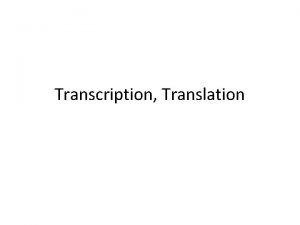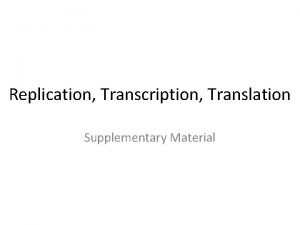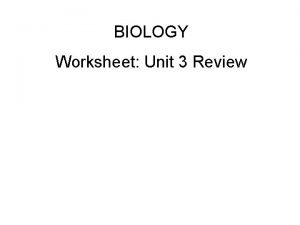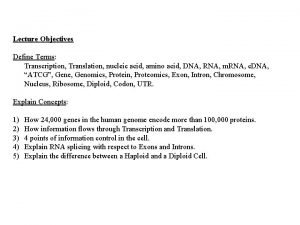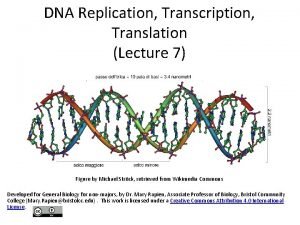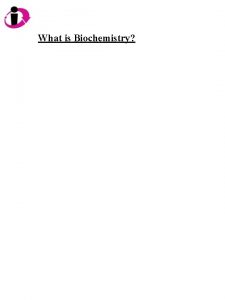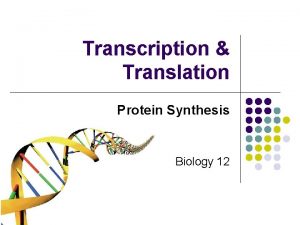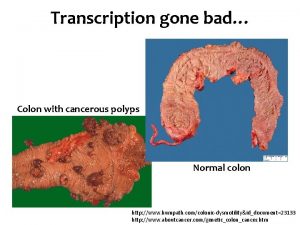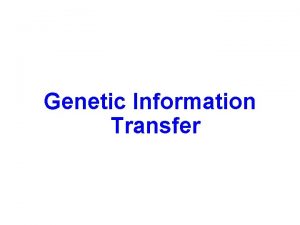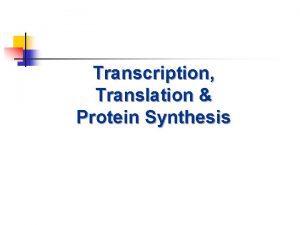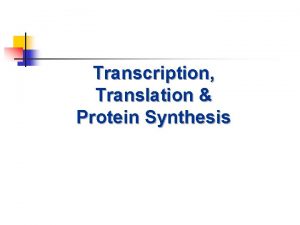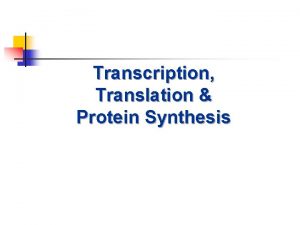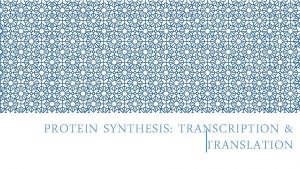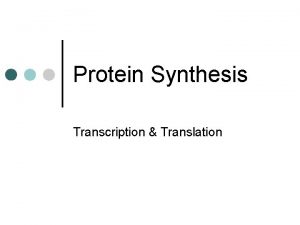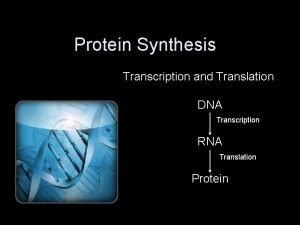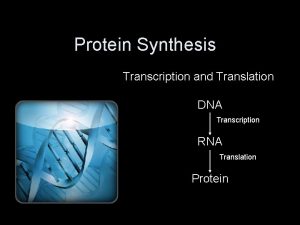Protein Synthesis TRANSLATION Transcription Over view Transcription The













- Slides: 13

Protein Synthesis TRANSLATION

Transcription Over view

Transcription : The reading of the DNA strand creation and processing of the m. RNA strand in the nucleus. Translation: The process that reads the m. RNA strand to create a strand of amino acids that becomes a protein. Gene Expression: The process by which the genetic code of a gene is used to direct protein synthesis. The expressing of a segment of DNA found on a chromosome that specifies the amino sequence of a polypeptide

Codon 1 codon = 1 amino acid A sequence of three nucleotides = 1 codon 64 different codon triplets 61 code for amino acids, 3 stop codons

Transfer RNA (t. RNA) Brings amino acids to the ribosomes Single stranded poly nucleotide that doubles back on itself On one end is an amino acid, other end is anticodon Anticodon a triplet of three bases complementary to a specific codon of m. RNA During translation t. RNA brings amino acids to the ribosomes the order dictated by sequence of m. RNA

Translation Initiation: requires 3 steps: brings all the translation components together. Elongation: is the protein synthesis step in which a polypeptide increases length one amino acid at a time Termination: The steps necessary to end the process of translation.

Initiation During initiation the small ribosomal unit, m. RNA, initiator The small ribosomal unit attaches to the m. RNA in the vicinity of the start codon (AUG). The anti-codon of the initiator t. RNA pairs with the start codon. Then, the large ribosomal unit joins to the small unit. A ribosome has three binding sites for t. RNA A for amino acid site P for polypeptide site Only the initiator t. RNA binds to the P site the rest start at the A site. t. RNA, and large ribosomal unit all come together.


Elongation 1. t. RNA is attached to the P site, another t. RNA attaches to A site 2. the polypeptide from the t. RNA on the P-site attaches to the t. RNA on the A site - to facilitate this a ribozyme which is part of the ribosomal subunit supplies energy 3. next is translocation, the m. RNA moves forward one codon length. The t. RNA in the P-site leaves the ribosome, the t. RNA at the A-site moves to the P-site and a new t. RNA attaches to the A-site.


Termination The steps continue until the ribosome meets a stop codon. A stop codon is one of three codons that do not code for an amino acid. The polypeptide is enzymatically cleaved from the last t. RNA by a release factor The t. RNA and polypeptide leave the ribosome which dissociates into its two subunits

Figure 4. Translation from RNA to Protein. During translation, the m. RNA tran

 Translate
Translate Transcription end result
Transcription end result Virusmax
Virusmax Transcription translation replication
Transcription translation replication Blood type chart
Blood type chart Transcription translation venn diagram
Transcription translation venn diagram Protein synthesis bbc bitesize
Protein synthesis bbc bitesize Dna transcription and translation
Dna transcription and translation Translation
Translation Dna replication transcription and translation
Dna replication transcription and translation Translation transcription
Translation transcription Transcription or translation
Transcription or translation Translation transcription
Translation transcription Semiconservative replication
Semiconservative replication

